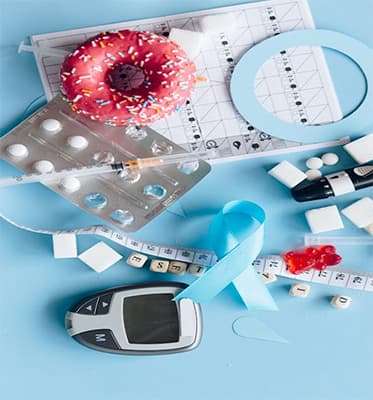Virtual treatment or telemedicine & Remote Patient Monitoring
Virtual treatment or telemedicine & Remote Patient Monitoring
CMT also helps in gaining proper access and advantage based meticulous approach to Tele Health in terms of having management, awareness and treatment to Cardiometabolic Diseases and other disorders. We also help in individual customized Doctor-Patient approach (Meeting your personal physician/family physician/specialist or CMT guided physician/family physician/specialist) for seamless queries related to different aspects of treatment and management

Virtual Treatment / Telemedicine
What is Telemedicine?
Telemedicine refers to the remote diagnosis, treatment, and consultation of patients using telecommunications technology. It allows patients and healthcare professionals to interact through video calls, phone, or chat-based platforms, eliminating the need for in-person visits in many scenarios.
Types of Telemedicine Services
| Type | Description |
|---|---|
| Synchronous | Real-time consultations via video or phone (e.g., virtual doctor visits) |
| Asynchronous | Store-and-forward communication (e.g., sending reports, images, or questions for later review) |
| Remote Monitoring | Collecting patient data outside clinical settings (linked to RPM, discussed below) |
| Mobile Health (mHealth) | Health apps, text alerts, and wellness tracking via smartphones |
Common Use Cases of Telemedicine
General consultations and follow-ups
Mental health services (telepsychiatry)
Dermatology (photo-based diagnosis)
Chronic disease management (e.g., diabetes, hypertension)
Medication management and prescription renewals
Pediatric consultations
Post-operative care check-ins
Benefits of Telemedicine
For Patients
Convenience and time-saving
Access to care in remote or underserved areas
Reduced travel and wait times
Lower exposure to infections (especially in pandemics)
For Providers
Greater scheduling flexibility
Higher patient engagement and retention
Ability to manage larger patient loads
Reduced no-show rates
For Health Systems
Cost-effective service delivery
Scalability for public health outreach
Emergency preparedness and triage
Limitations and Challenges of Telemedicine
Limited in acute or emergency cases requiring physical exams
Technical barriers: Internet access, device availability
Licensing and jurisdiction issues (cross-border consultations)
Data privacy and cybersecurity concerns
Reimbursement and regulatory variations
Remote Patient Monitoring (RPM)
What is Remote Patient Monitoring (RPM)?
Remote Patient Monitoring involves the collection, transmission, and evaluation of patient health data from outside traditional clinical settings—typically from the patient’s home. It uses digital devices to track vital signs and health metrics, which are then sent to healthcare providers for ongoing monitoring and care adjustments.
Key Components of RPM
Monitoring Devices:
Blood pressure cuffs
Glucometers
Pulse oximeters
Digital weight scales
Wearables (e.g., smartwatches, fitness trackers)
ECG or heart rhythm monitors
Connectivity Infrastructure:
Bluetooth/Wi-Fi enabled devices
Cloud-based health platforms
Mobile apps or dashboards for data review
Clinical Response Teams:
Nurses, care coordinators, or physicians reviewing data and taking action when needed
Conditions Commonly Managed with RPM
Hypertension
Diabetes
Congestive heart failure (CHF)
Chronic obstructive pulmonary disease (COPD)
Obesity
Post-surgical recovery
Pregnancy (high-risk monitoring)
COVID-19 home care
Benefits of RPM
For Patients
Comfort of care at home
Early detection of health issues
Better disease control and medication adherence
Reduced hospital visits and readmissions
For Providers
Real-time patient data for proactive decision-making
Improved patient engagement
Personalized care plans based on continuous data
For Health Systems
Lower burden on emergency and inpatient services
Cost savings through prevention and timely intervention
Enhanced outcomes in chronic disease management
Integration of Telemedicine and RPM
Telemedicine and RPM are often used together to deliver a hybrid model of care:
Patients use RPM devices to track health daily
Physicians analyze data remotely
Virtual follow-up appointments are scheduled as needed
Alerts can trigger intervention in case of abnormal readings
This integrated approach ensures continuous care rather than episodic visits.
Regulatory and Data Security Considerations
HIPAA (US), GDPR (EU), and national data protection laws must be followed
Encryption and secure data transmission are critical
Consent and transparency with patients are required
Licensing and remote prescribing laws vary by region
Future Trends in Virtual Care & RPM
AI and machine learning to predict health risks
Chatbots and virtual assistants for triage and education
Interoperable platforms integrating EHR, telehealth, and RPM data
5G networks enabling real-time remote diagnostics
Voice-enabled devices for elderly or visually impaired patients
Smart homes and IoT in senior care and assisted living
